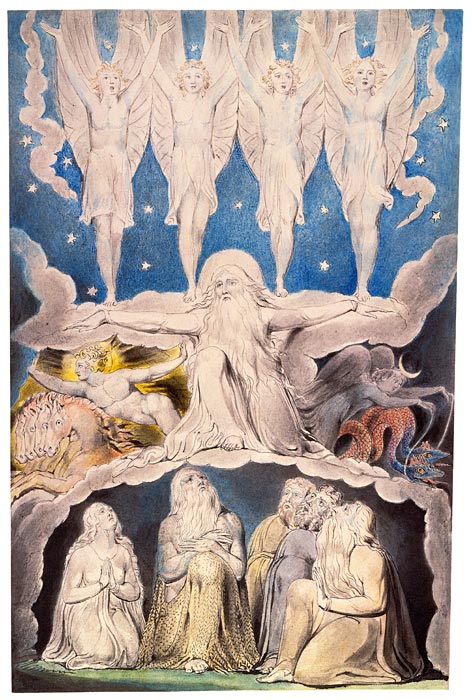
The series of twenty-one watercolor illustrations for the Book of Job are one of Blake's supreme achievements. Here, God reenacts the creation of the world, while Job and his wife kneel below. The scene follows the moment in which Job challenged God to appear and explain why he deserved the succession of evils that devastated him. "Then the Lord answered Job out of the whirlwind . . . Where wast thou when I laid the foundations of the earth? . . . When the morning stars sang together, and all the sons of God shouted for joy?"
III. The Book of Job
These watercolors constitute Blake's first set of illustrations for the Book of Job, which the artist produced between 1805 and 1810 for his most important patron, Thomas Butts, plus two (plates 17 and 20) that he added after 1821 when he borrowed the set to copy for John Linnell.
The story of Job is of a good man sorely tested in order to understand the relationship between the evil of suffering and the existence of God. In Blake's version, Job's major flaw is attending to the letter, rather than the spirit, of God's law. In doing so, Job falls under Satan's spell and his suffering progresses into the horrible vision of a cloven-hoofed demon in the eleventh plate, Job's Evil Dreams. Elihu and Eliphaz, two of Job's friends, express particular arguments regarding his unidentified sin; however, his constant faith in God prevails. The remaining plates recount Job's spiritual growth— including the image where God shows him the Behemoth and Leviathan, the monsters of earth and sea—culminating in his family's celebration in the final image.
All drawings in pen and black ink, gray wash, and watercolor, over traces of graphite
